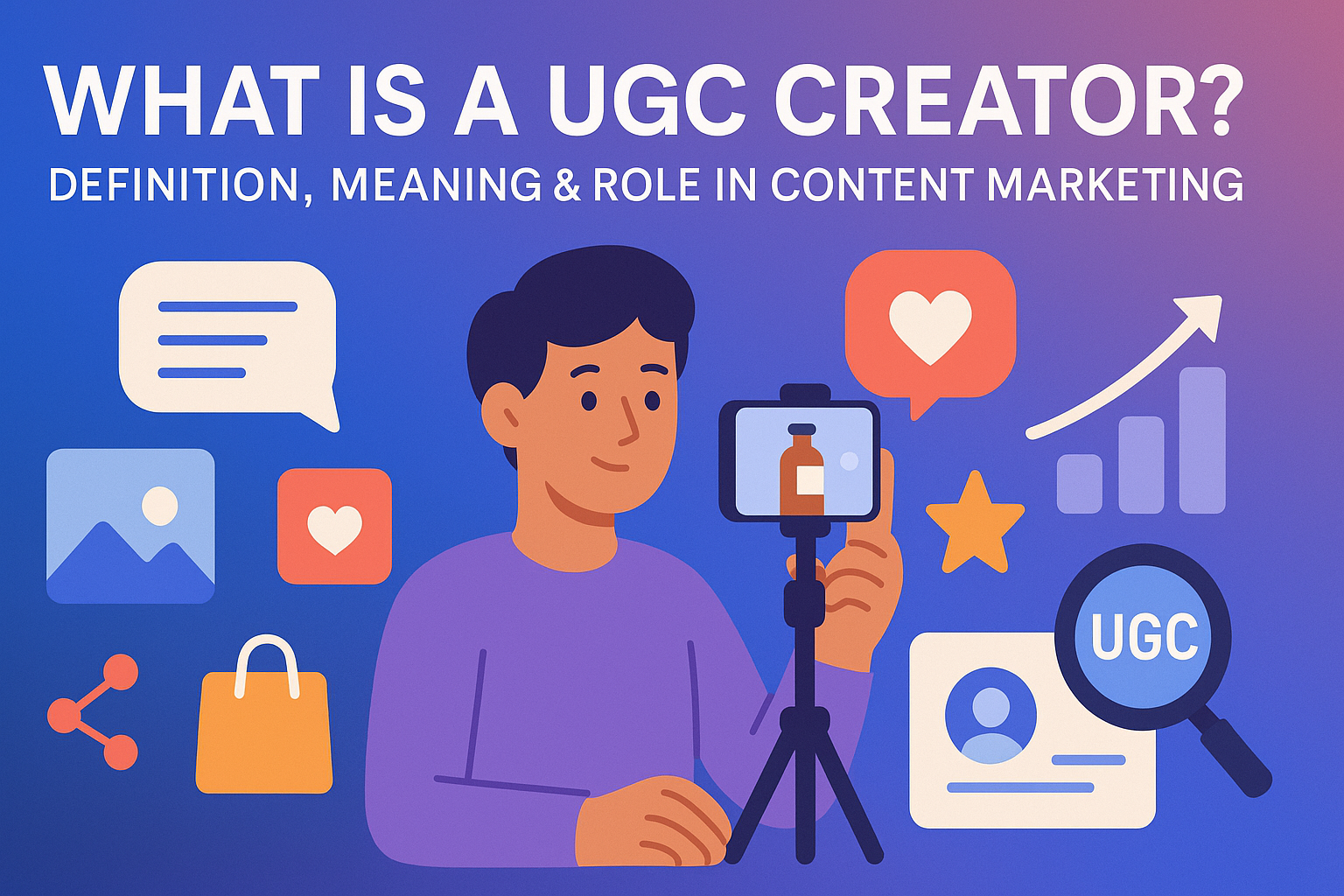What is a UGC Creator? UGC Creator Definition, Meaning & Role in Content Marketing

Definition: What is a UGC Creator?
A UGC Creator (User-Generated Content Creator) is an individual paid by brands to produce content—such as photos, videos, testimonials, or reviews—that emulates the authenticity and relatability of organic user-generated content. According to Emplifi and Later, the modern “UGC Creator” differs from classic UGC in that they are contracted for content that still feels peer-to-peer but is professionally delivered and typically owned/used by the brand.
Note: Traditional UGC describes content created voluntarily and organically by everyday users, uncompensated and uninstructed by brands.
How Does UGC Creation Work? (From Brief to Brand Use)
Professional UGC Creators work through a clear, step-by-step workflow:
Brand Outreach & Brief: Brands define campaign expectations and provide a creative brief outlining tone, deliverables, and deadlines.
Content Production: The UGC Creator produces videos, photos, or posts—often formatted for social platforms (like TikTok, Instagram, or YouTube Shorts).
Review & Revisions: Content is reviewed by the brand; revisions are requested as needed to match brand voice and compliance.
Rights, Delivery & Disclosure: Final content is delivered; rights are usually transferred to the brand for use in ads or marketing. Paid partnerships must be transparently disclosed for legal and ethical reasons.
UGC Creator vs. Influencer vs. Organic UGC: Key Differences
To clarify common confusion, here’s a side-by-side comparison:
UGC Creator | Influencer | Organic UGC User | |
|---|---|---|---|
Paid? | Yes, for produced content | Yes, for promoting to their own audience | No (creates content voluntarily) |
Audience Needed? | No; content not reliant on large personal following | Yes; paid due to existing follower base | No, but may have followers |
Content Posted Where? | On brand’s owned channels | On influencer’s own platforms | On user’s channels, often tagged organically |
Creative Control | Limited—to brief and brand specs | High—personal storytelling and style | Full—self-initiated, no brand involvement |
Disclosure Needed? | Yes | Yes | No, unless sponsored |
Why Do Brands Use UGC Creators?
Authenticity at Scale: Brands harness “authentic” storytelling without waiting for real organic users.
Cost-Efficiency: More affordable and controllable than top-tier influencer campaigns.
Format Versatility: Useful for testimonials, ads, product demos, and more.
Performance: UGC-styled ads have been shown to outperform traditional creative for engagement and trust, especially in SaaS, ecommerce, and social commerce.
Mini Scenario: UGC Creator in Action
A SaaS startup wants authentic testimonials for a new feature. Instead of sourcing real customer reviews, it hires a group of UGC Creators to record short, on-brand video reviews. The brand provides a script framework and guidelines. After review and revisions, the company publishes these videos on its landing page and paid social ads, seeing a notable increase in click-through and trust metrics—demonstrating fast, scalable impact.
Challenges: Authenticity & Compliance
Authenticity Risk: If audiences sense content is “staged” or paid without disclosure, trust and campaign performance suffer.
Legal & Compliance: Always disclose paid partnerships and ensure rights transfers/contracts are clear.
Related Concepts & Further Reading
Glossary
UGC (User-Generated Content): Any content voluntarily created by users, not formally compensated by brands.
Influencer: An individual with a dedicated following, paid to promote brands on their own social platforms.
Disclosure: Legal requirement to reveal paid partnerships or gifted content.
Creative Brief: A document with instructions and expectations given by a brand to a creator.
References:

